Mass at Sto. Pelasio in Naselesele
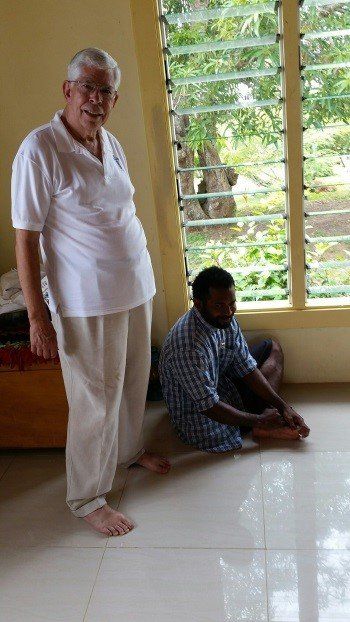 Before Mass, Msgr. Lofton introduced me to Mica, one of the members seated in the back of the church. Mica lost one of his legs and Msgr. had arranged for a prosthetic leg. They have not been able to fit it properly in Fiji, and Msgr. is hoping to bring him to the US to be fitted properly.
Before Mass, Msgr. Lofton introduced me to Mica, one of the members seated in the back of the church. Mica lost one of his legs and Msgr. had arranged for a prosthetic leg. They have not been able to fit it properly in Fiji, and Msgr. is hoping to bring him to the US to be fitted properly.
 Since it was Sunday, Msgr. Lofton was asked to celebrate Mass at Sto, Pelasio parish in Naselesele, which was built with the support of the diocese of Charleston Pontifical Mission Society support. I was asked to do a short class with the children before Mass. We covered the Trinity. They have a very good understanding of God the Father and God the Son, and the importance of Jesus. They have a concept of the Holy Spirit but weren’t quite as clear on the difference. I handed out prayer cards and we prayed together. All of them were able to understand me and answer in English and they read and recited the prayer beautifully.
Since it was Sunday, Msgr. Lofton was asked to celebrate Mass at Sto, Pelasio parish in Naselesele, which was built with the support of the diocese of Charleston Pontifical Mission Society support. I was asked to do a short class with the children before Mass. We covered the Trinity. They have a very good understanding of God the Father and God the Son, and the importance of Jesus. They have a concept of the Holy Spirit but weren’t quite as clear on the difference. I handed out prayer cards and we prayed together. All of them were able to understand me and answer in English and they read and recited the prayer beautifully.
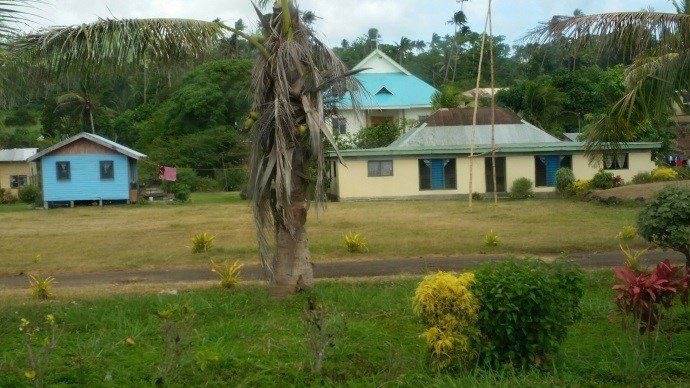
As the church began to fill up, one of the young men sounded the lali, and the entrance song began. The celebration was a combination of English and Fijian, my first experience with that combination in a bi-lingual Mass! The choir and congregation actively sang all the hymns in parts without accompaniment. It was an uplifting and reverent Mass.
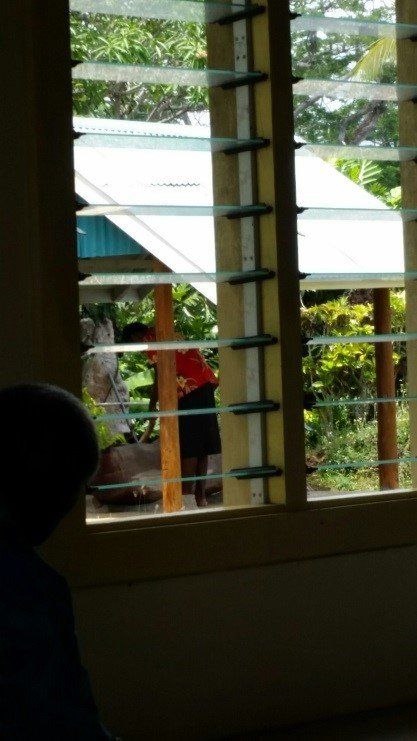
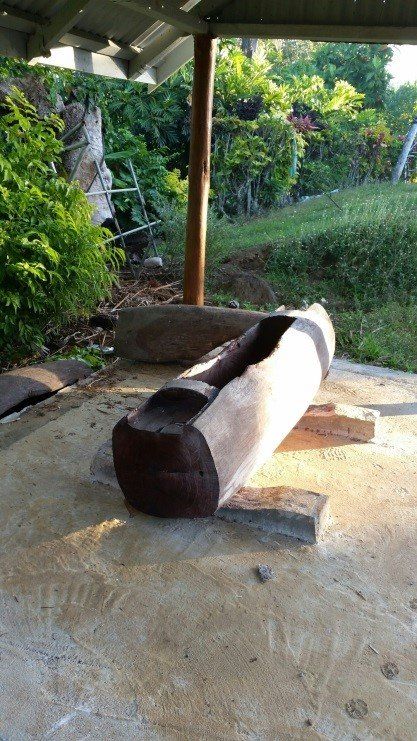
The statue of Jesus over the altar was donated from St. Theresa the Little Flower parish in Summerville, SC where it hung previously. The statue had a circuitous route getting to Fiji, which created a “Where’s Jesus?” search for a while.
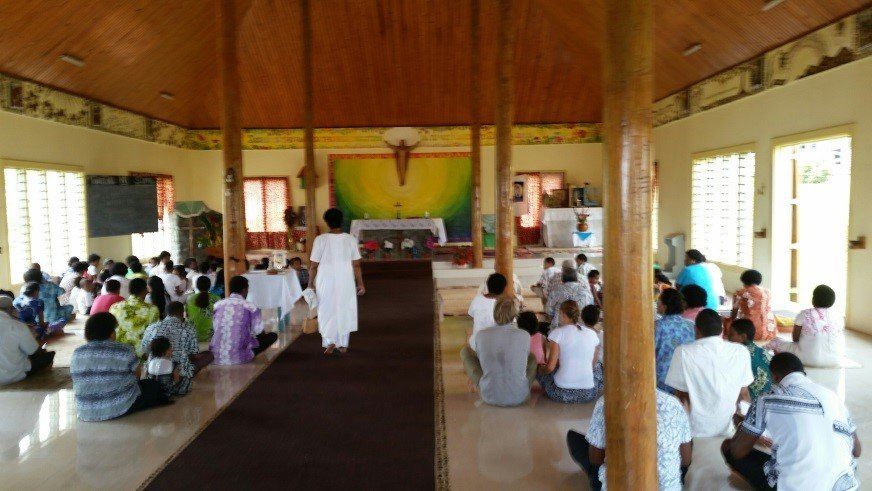
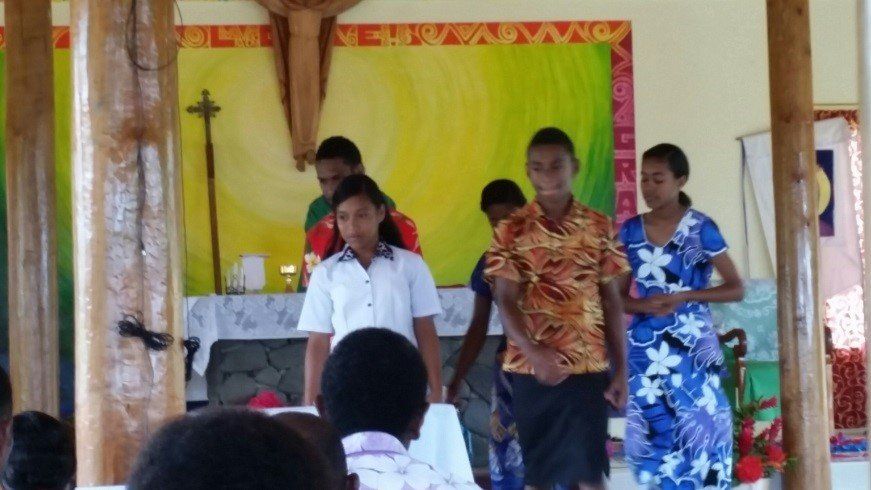
After Mass I had the opportunity to meet with the Chief of the Village, who had attended Mass with his family. The chief was very interested to learn about the resources of Our Sunday Visitor. Then he went on to talk with Msgr. Lofton about how to get a water supply run to the village. Water is a significant problem in Taveuni, Fiji. While there is water available with streams that run throughout the year in some areas of the island, there are no water lines so villages use catchment basins for water.
The village chiefs are descendants of ancient chiefs from tribal days. They were an active part of the country management and served as the leaders for their villages and communities as voting and ruling members of the national government until the election in 2013 which introduced a centralized government and moved the chiefs out of the active role. As I learned later, the chief still has an important role in the villages, and there is a voted leader of the community who becomes the “head man” to be the representative to the chief and to the national government. This background explains why the Chief of Naselesele wanted to talk about water supply.
As we walked out of the church, Yava’s son Mica was walking up to the entrance with a bunch of roots wrapped in newspaper and neatly tied. He handed it to Wauni who was taking it to Nawi with us as an offering to the chief there. This was to be part of our visit to the new church being built in Nawi on Venua Leva.
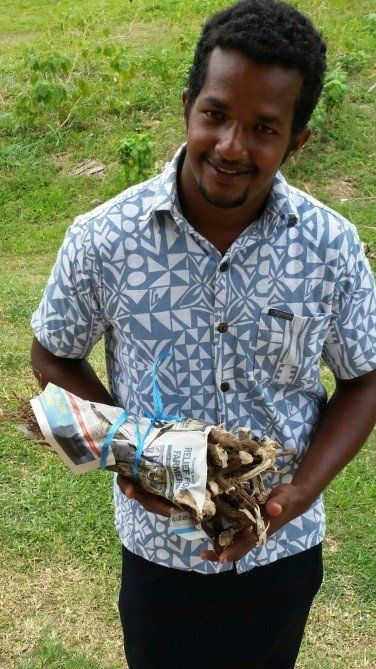

I asked about the kava. “It’s a tradition we have carried on,” said Wauni. I asked how long. “Over 1,000 years. We show our appreciation to the villagers and ask to be welcomed to the village by bringing a gift of kava.”
Kava is a green leafy plant grown on the hillsides. The root is collected and dried, then grated and placed in a cloth with water, The cloth is squeezed repeatedly and the liquid that is squeezed through the cloth is collected in a bowl and drunk out of coconut shells. The cloudy drink is a mild analgesic.
I asked some of the children what they would do for the rest of the day. “Go home and eat dinner, and then come back at 3 o’clock to pray the rosary.”
“What will you do after dinner?”
“Sleep.”
I think that was because they were too shy to talk more. I asked what they would eat and they didn’t know. I learned later what a typical Sunday meal is in a village.
.jpg)
.jpg)
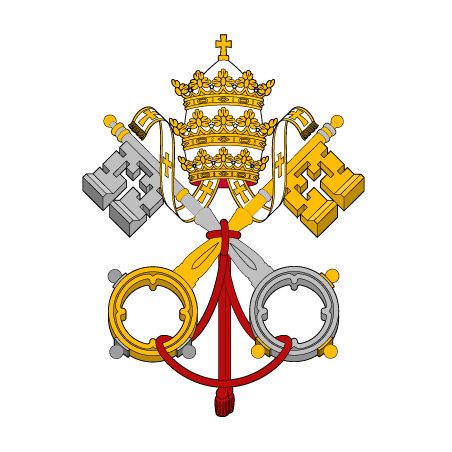
.jpg)
